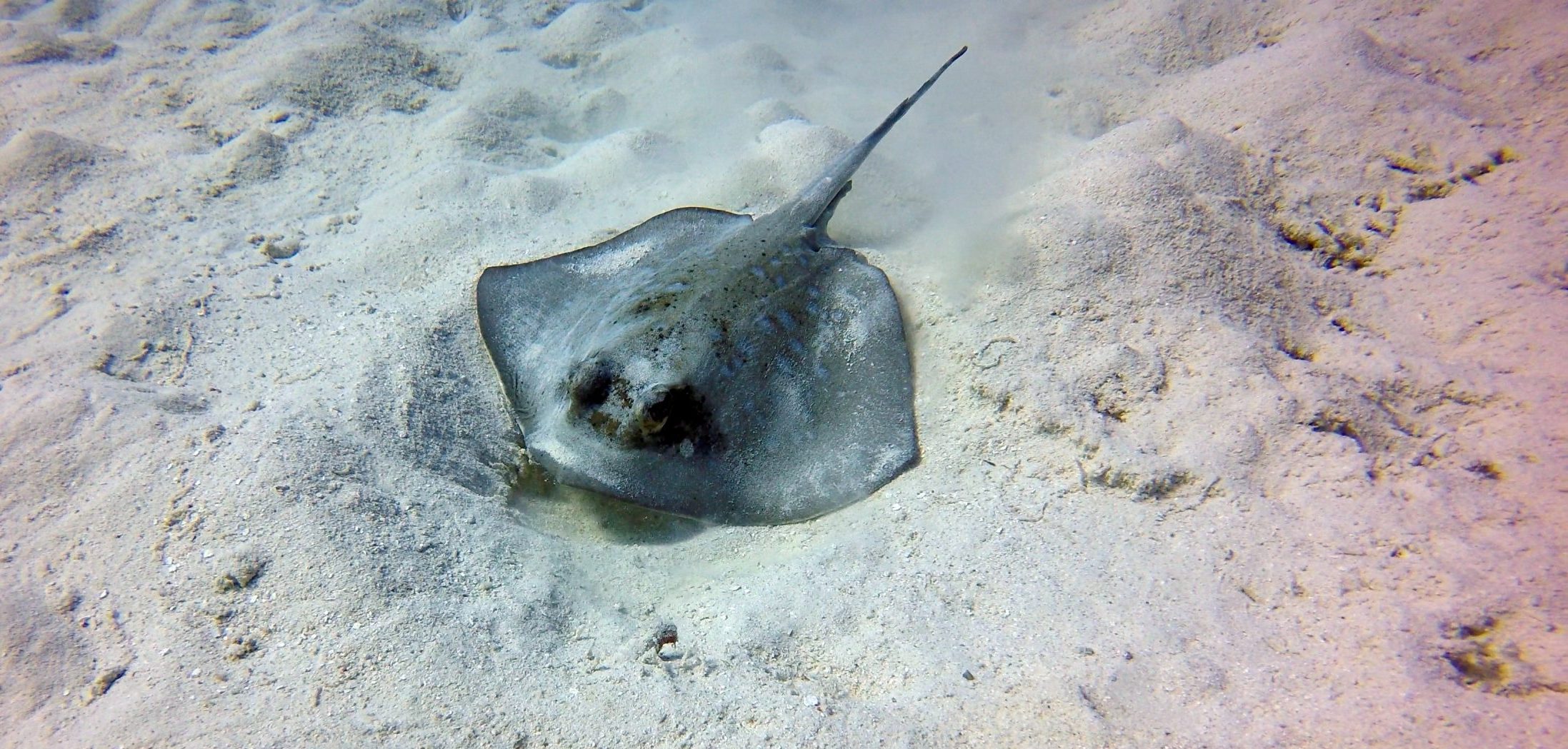Everything But the Shark Week: Considering the Lobsters

Lobsters have not always gotten respect, nor were they the gourmet delicacy we consider them today. In American Colonial times, the creature (aka the “cockroach of the sea”) washed up to the shore so plentifully (reportedly in two feet wide by two feet deep piles), that it was used as bait or fertilizer for crops, and consumed mostly as a very inexpensive source of protein.
Colonists saw how this leggy harvest provided a prodigious food source for the American Indians, and followed suit; in fact, lobster was on the menu at the first Thanksgiving. But it was so plentiful that people complained about having to eat it too often; urban legends abound that prisoners and servants would sue in order to not be fed lobster more than three times a week.
Ultimately, advances in canning, refrigeration and transportation allowed city dwellers and those in non-coastal areas to sample the creature’s delicious meat, creating a demand that resulted in people willing to pay top dollar for it.
According to the State of Maine Department of Marine Resources (DMR), the value of the state’s commercially harvested marine resources exceeded over $600 million dollars in 2018, making it the second highest year on record. Lobsters accounted for over 75% of this bounty, landing almost 120 million pounds.
And yet, lobstermen still call them bugs!
But enough about food. We’re here to tell you that the creatures themselves are amazing even when they are not covered in butter on a grilled split-top bun! Lobsters are one of a kind in the animal kingdom. For example, did you know….
- The word origin of lobster: If you think about it (but don’t think too hard, because you don’t want to lose your appetite,) lobsters do look like bugs. At least the Romans and Medieval British thought so. The word lobster comes from the Old English loppestre, which is related to the O.E. word for spider: loppe. Phonetically, this eventually merged with the Latin word the Romans used: locusta, or locust, creating the word lobster.
- Anatomy: Lobsters are very closely related to insects. They are classified as an arthropodic, decapodic (10-legged) crustacea with a soft and flexible exoskeleton. They use some of those legs to eat, as they have chemosensory leg and feet hair that can catch and taste food. They can regenerate their legs, claws and antennae, and will even amputate themselves to escape danger. They come in an assortment of colors ( but only turn red when in hot water!) And here’s something you will never unsee–have you ever noticed the difference between a lobster’s two front claws? One is a pincer, and one is a crusher.
- A reputation for cannibalism: A lobster’s preferred diet consists of crabs, sea stars, and sea urchins. But the rubber band that one sees on the lobster claws at pounds and restaurants is not to protect fishermen or diners, but to protect other lobsters as they, like the rest of us, love to eat lobster when hungry.
- They are eaten best fresh: The reason why lobsters are kept in tanks in a restaurant is because they taste best fresh. John Steinbeck, in Travels with Charley, visited Deer Isle, Maine, and advised that “eating lobster is as much about the experience as the taste itself. We sat with our feet dangling over the water, flicking the shells back from were they came.”
Lobster-link-alooza! A shellabration of info:
- The University of Maine maintains a Lobster Institute. In its mission is to conduct and promote research and sustainability of lobster fishery in the US and Canada, it provides an exhaustive online list of all things lobster, including scholarly articles.
- Searchable Sea Literature: your new favorite nautical news site, edited by Richard J. King.
- Lobster economics from howstuffworks.com
- Word etymology from foodie magazine Bon Appetit. Dig deeper on the site to find their lobster roll recipe-but any mayo is too much mayo, IMHO.
- The Lobster Conservancy: not updated since 2010, but still loads of lobster 411.
Check out these resources, available at Falvey, or through interlibrary loan:
Inspirational in literature and pop culture:
- Alice In Wonderland danced the Lobster Quadrille and stated, “Tis the voice of the Lobster: I heard him declare, You have baked me too brown, I must sugar my hair!”
- Comic book hero Lobster Johnson was created by Mike Mignola. This character is part of the Hellboy universe and may be based on a real-life vigilante.
- Wonderment and misconceptions about oceans and lobsters conjured fictitious sea monsters on medieval maps. And Jules Verne raged, in 20,000 Leagues Under the Sea, “My blood curdled when I saw enormous antennae blocking my road, or some frightful claw closing with a noise in the shadow of some cavity…”
In Poetry:
Too many poets to mention were inspired by lobsters, but check out New Englander poets Troy Jollimore and Ann Sexton; Scottish Orcadian George Mackey Brown, and even Jersey’s Walt Whitman’s A Song of Joys for wonderful lobster-verse.
In Books:
Stephen King: One might think that as the reigning king of Maine-based fiction, SK would often feature lobsters, but seems to only have featured them as lobstrosities in The Dark Tower (begins in 1982) series.
The other King, Richard J., is a better source. He is an educator, author, illustrator, and edits the online reference site Searchable Sea Literature. (Incidentally, had his first lobster at the Main Line Seafood in Ardmore!) His book Lobster (2011) is must-read for a compendium of fun lobster facts and history.
Stewart O’Nan, who has collaborated with Stephen King, wrote Last Night at the Lobster, (2007) a novel which takes place over the course of the final shift at a Red Lobster being permanently closed by corporate, and the impact of it on its local blue-collar workers and clientele.
David Foster Wallace’s Consider the Lobster (2005) essay visits the Maine Lobster Festival (cancelled this year because of COVID), where PETA usually makes an appearance. DFW articulates troubling questions about lobster and whether they feel pain; asking hey, don’t they behave like you or I would if thrown into a boiling pot of water?
Linda Greenlaw – who was featured in Sebastian Junger’s The Perfect Storm, takes readers though a lobster season in The Lobster Chronicles: Life on a Very Small Island (2002) and these days writes a Maine-based mystery series.
Cozy Mystery series involving lobsters – What’s a cozy you ask? Amateur sleuths solving kooky crimes while juggling a day job such as lobster-fishing. Series involving lobsters in the mix include authors Barbara Ross, Shari Randall, among others.
Elizabeth Gilbert – Stern Men (2000) From the author of the popular Eat, Pray, Love, is her debut novel about life, love and lobster-fishing.
Duncan MacMillan – The Most Humane Way to Kill a Lobster (2012) – This British play utilizes lobster cooking metaphors of deep freezes and slow boils to mirror a midlife crisis.
Elisabeth Towsend, Lobsters (2011) Part of an 89(!) book series on food and history.
Trevor Corson’s The Secret Life of Lobsters (2009) – for a look at lobsters when they think we aren’t looking.
Nancy Frazier’s I, Lobster: A Crustacean Odyssey (2012) explores the lobster as symbols in art, myth and science.
Christopher White‘s The Last Lobster (2018) Examines the boom and possible crash of the lobster industry. Warnings to conserve began as early as 1900, with the poet Holman F. Day’s message to lobsters: “tell the dodo that you saw us when you lived down here in Maine.”
Also, surprisingly, in our online collection is a cute children’s picture book by Martha Rustad called (not surprisingly) Lobsters (2008).
And, finally, if you’re thinking about going into the business, don’t miss Bruce Phillips’ Lobsters: Biology, Management, Fisheries and Aquaculture (2013) for exhaustive coverage of lobster biology, management, and conservation. This book is one of hundreds of print or online resources on the business of lobstering in our collection.
Your reward for scrolling this far:
…and of course, Phoebe Buffay from Friends provides your #1 lobster fact: “It’s a known fact that lobsters fall in love and mate for life!”
Hungry for more?
If you’re on your way down east, don’t miss Reds’ Eats in Wicasset, Maine. But, according to the New York Times, be prepared to spend a bit this year, as lobster rolls are reportedly up to $34 each (but still worth every bite.) #blamethepandemic.
Or, stay in town and check out the Cousins Maine Lobster truck schedule–they bring the lobster to you…and even found time to write a book about how they do it.

Joanne Quinn ’15 MA, ’84 CLAS is Director of Communication and Marketing at Falvey Memorial Library. She will pay $34.00 for a lobster roll if she has to.







